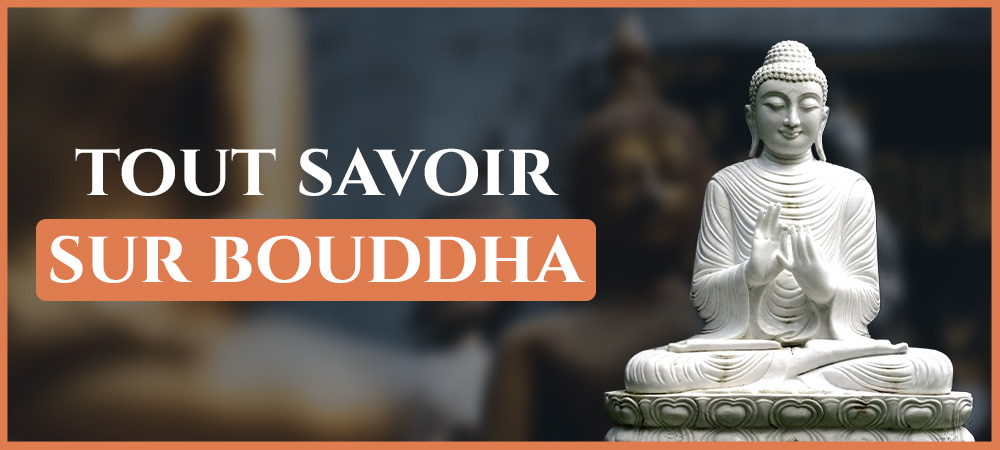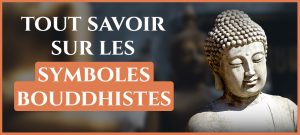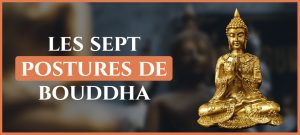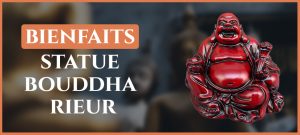Are you wondering why Buddha has closed eyes, why Buddha is fat or why he has big ears? We will answer all these questions in this article. We will also see how Buddha died or how did he become wise.
All these answers will allow you to know more about this Buddhist deity revered throughout the world.
Why did Buddha have his eyes closed?

On all statues and other representations of Buddha, the deity has closed eyes. As you probably suspect, this was not chosen at random and has a special meaning. Let's find out together why Buddha has his eyes closed.
To meditate more easily
Buddha is known for giving up a life full of material wealth and power to devote himself to awakening and enlightenment. But to achieve full consciousness and awaken his mind, he had to practice a lot of meditation.
During the sessions, he kept his eyes closed in order to concentrate and avoid external distractions. By keeping his eyes closed, he also escaped the demon Mara.
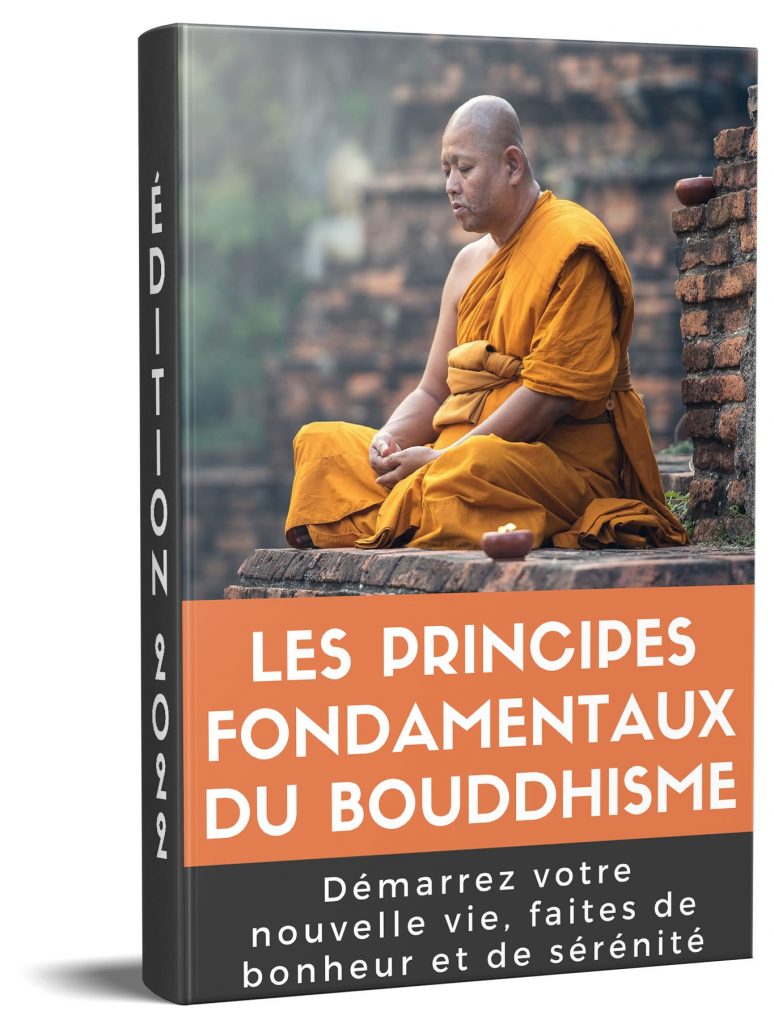
Discover how to apply the fundamental principles of Buddhism to have a happier and more fulfilled life.
17,00€ FREE OF CHARGE
Close your eyes to connect with your mind
By closing his eyes, Buddha can also connect more easily with his mind and begin his process of introspection. He can therefore listen to his heart, feel his emotions and travel in a spiritual experience.
This is how he achieved enlightenment under the Bodhi tree. This Buddhist deity manages to clear his mind and reach a great level of unconsciousness to connect to the other world. His soul and spirit travel and can receive divine messages.
Buddha has his eyes closed to symbolize spirituality
During various religious and spiritual rituals, Buddhist monks keep their eyes closed. This allows you to have your attention fully devoted to this ritual and is a sign of respect.
In addition, having your eyes closed allows you to have greater control over yourself and therefore master your emotions and pain. This is also what advocates 10 rules of Buddhism.
In all Buddha postures, he is therefore represented with his eyes closed for the reasons we have listed.
Why is Buddha fat?
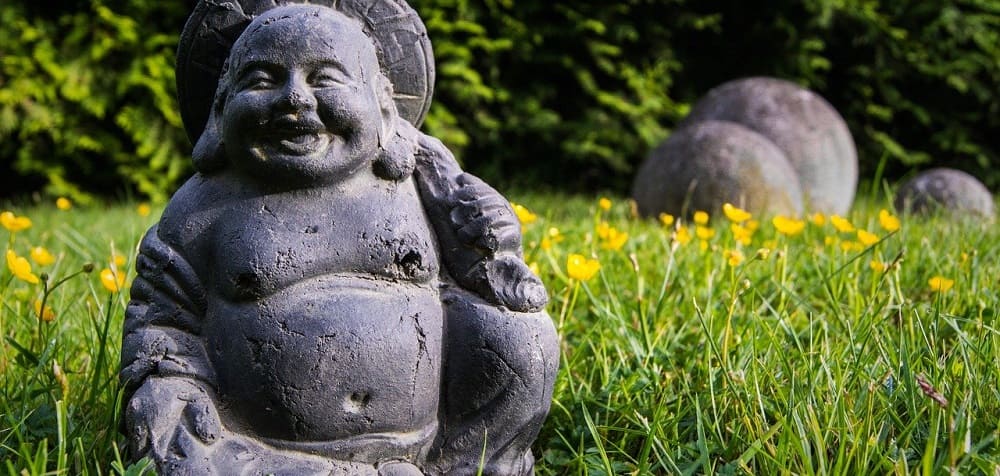
The Fat Buddha or Laughing Buddha is a very popular Buddhist deity who is often represented in the form of a statue. This deity is different from the one we saw previously and which is represented with closed eyes.
The first symbolizes appeasement, wisdom, meditation or even access to awakening and enlightenment. As for the Laughing Buddha, he embodies the joy of life, wealth, kindness and happiness. But then, why is this Buddha fat ?
Who is the fat Buddha?
This big-bellied deity is called Laughing Buddha or Budai. She is depicted with a big smile to symbolize joy and happiness.
In Buddhist belief, caressing your belly is considered to bring good luck. This is why we often find a laughing Buddha statue at the entrance to the houses. So, guests can easily touch her belly and be touched by her blessing.
The Laughing Buddha is also known for spreading his happiness and wealth throughout Asia. He traveled with a bag of gold coins which he distributed and he absorbed people's misfortune in this same bag.
It is therefore a very important deity in Buddhism who is respected by all practitioners.
The meaning of a big belly
There are several reasons why the Buddha is big. First, in Asian beliefs the belly and stomach are the home of the soul. It is therefore a very important part of the body according to this belief. The big belly therefore symbolizes the wisdom and pure soul of the Buddha.
In addition, the big belly symbolizes the fact that he was a bon vivant, favoring happiness over moderation. His overweight is often highlighted by an open shirt in order to advocate self-acceptance. Despite his overweight, the fat Buddha accepted himself and was happy.
Why does Buddha have big ears?
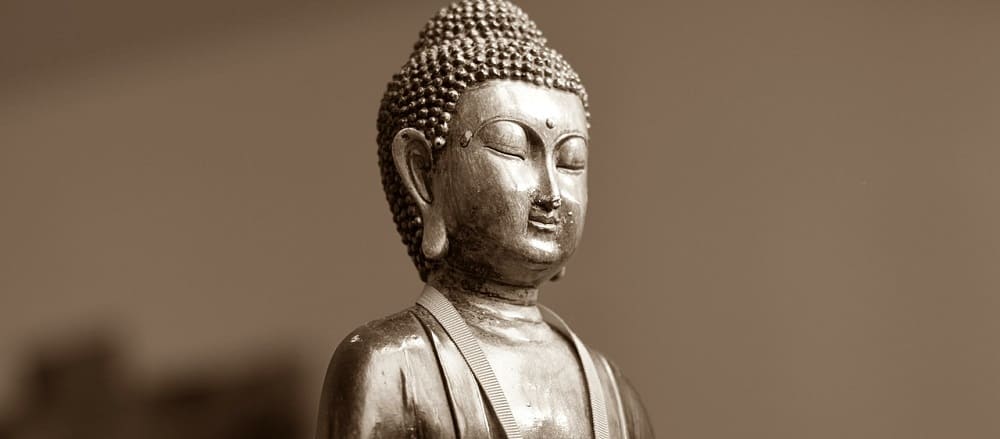
On Gautama Buddha statues, the Buddhist deity is represented with long ears. We can then ask ourselves, why Buddha has big ears ?
The origin of Buddha's long ears
As we saw at the beginning of this article, before renouncing wealth, Buddha was a very wealthy young prince. He lived in the current state of Nepal within his royal family in a large palace.
To represent their power and wealth, royal families wore outward signs of wealth. This obviously involved imposing jewelry made of precious metals.
At that time, wearing heavy, large earrings perfectly symbolized wealth and showed that you were part of an important family.
Buddha therefore wore large earrings and over time the weight stretched both of his lobes. So he ended up with big ears.
Once deformed, the ears do not snap back into place because they are not elastic. So, even after giving up wealth, Buddha continues to have his long earlobes. This allows him to remember where he came from, but also to show that he was attracted to superficial happiness before reaching awakening and enlightenment.
The symbol of long ears according to Buddhists

Discover how to apply the fundamental principles of Buddhism to have a happier and more fulfilled life.
17,00€ FREE OF CHARGE
For Buddhist believers, the Buddha's large ears perfectly symbolize his renunciation of wealth and power. This therefore testifies to his great wisdom.
Despite the fact that he was born in ideal conditions, he was ready to give them up in order to follow his spiritual quest and achieve enlightenment.
This “scar” from his former life is therefore not pejorative. On the contrary, it is very inspiring for practitioners of Buddhism.
In addition, big ears symbolize listening and empathy. Indeed, thanks to these, Buddha can hear all the misfortunes of the world. Thus, he understands the suffering of the people around him.
How did Buddha become wise?
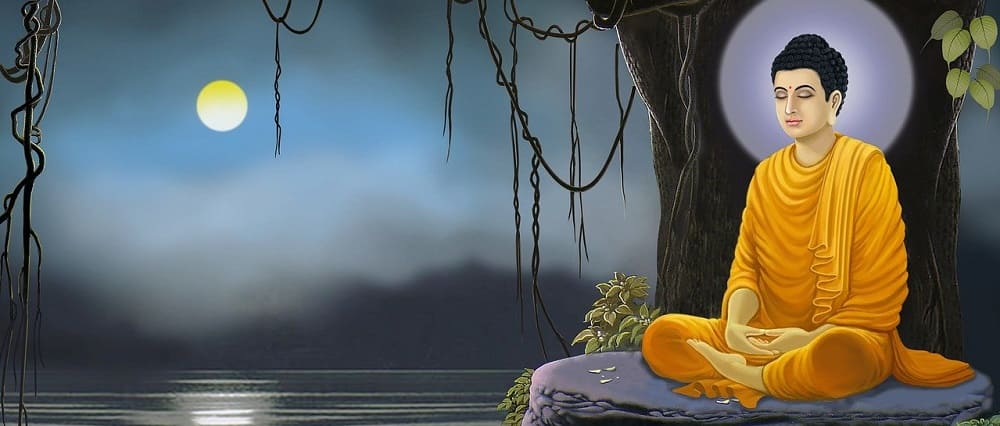
The four signs before achieving wisdom
According to Buddhist tradition, Buddha was confronted with 4 signs that changed his life and his vision of the world. These signs allow us to better understand how did buddha become wise.
He met an old man who testified that time passes and that it leaves marks on the body and mind.
The second sign was a greatly ill man symbolizing the fact that the body sometimes suffers before time has passed.
Then, Buddha came across a corpse just before it was burned at the stake. It embodied death and its sordid nature.
the 4rd and last sign is a hermit which perfectly symbolizes the notion of wisdom.
Thanks to these 4 meetings, Buddha questions himself and becomes aware of the suffering that surrounds him in different forms. He then understands that wisdom can help him control this suffering.
The moment Buddha becomes wise
Buddha became wise and achieved enlightenment at the age of 35, 6 years after giving up his wealth.
It was after a ritual bath and a long meditation session that Buddha decided to settle down under the Bodhi tree. He then promises not to move again until he has reached the ultimate truth. In other words, he is ready to wait until he reaches the ultimate truth and therefore becomes wise.
For several days Buddha remained motionless under the Bodhi tree. The demon Māra becomes aware of the power that Buddha will obtain, so he wants to prevent him from achieving enlightenment.
To do this, he tries all kinds of distractions, including sending frightening demons. But the Buddha remains focused thanks to a posture that has become very famous in Buddhism: the Bhûmisparsha Mudra.
After a final night of meditation, Buddha becomes wise and achieves enlightenment at dawn. He therefore becomes Gautama Buddha.
How did Buddha die?
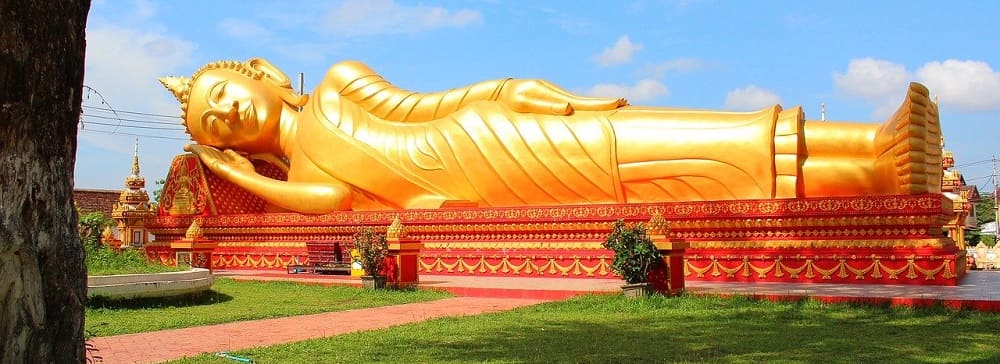
It was at the age of 80, in a town in India, that Buddha died. His last moments of life are very often represented through a reclining Buddha statue.
Le Buddha is lying down on the right side with its head resting on a cushion or on its hand. It is during a final meditation session that the Buddhist deity dies.
Tradition says that during his last moments of life, Buddha continued to smile and be fully peaceful. He attains parinirvāṇa through his wisdom and therefore flees the death-birth-rebirth cycle.
Upon reaching the parinirvāṇa, the Buddha experiences a final and complete death. This is possible only for people who have achieved enlightenment.
In order to satisfy the eight most powerful princes, the ashes of Buddha's body were divided into eight equal piles. These relics will then be placed in a stupa, a structure to commemorate the death of Buddha.
You now know how Buddha died and all the circumstances surrounding this symbolic event in Buddhism.
We are coming to the end of this article, I hope it has answered all your questions about the Buddhist deity. If so, you can share it with those around you so that they know more about Buddha.
If you are interested in Buddha, you should take a look at our online store and enjoy the Exclusive 10% off with the code BLOG10. Click here.

Discover how to apply the fundamental principles of Buddhism to have a happier and more fulfilled life.
17,00€ FREE OF CHARGE

